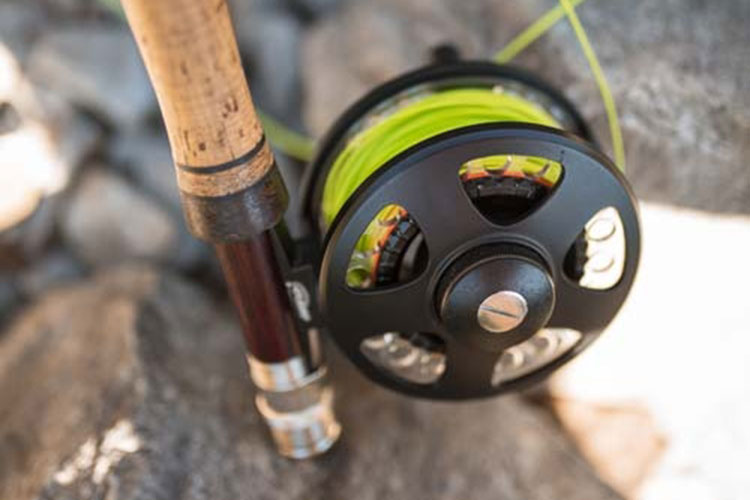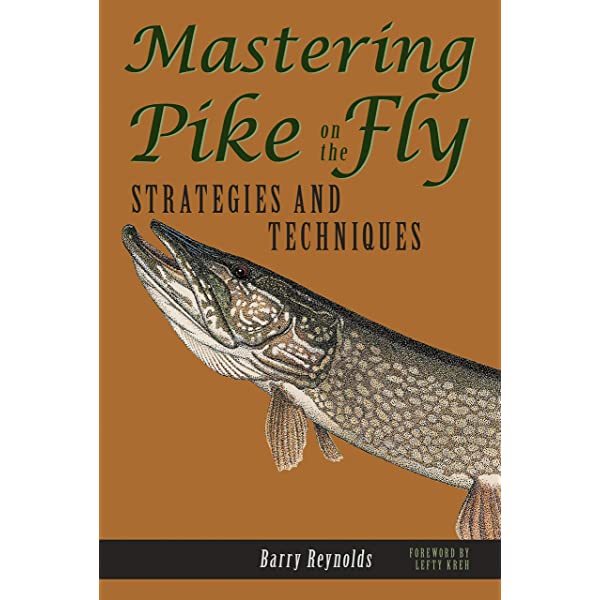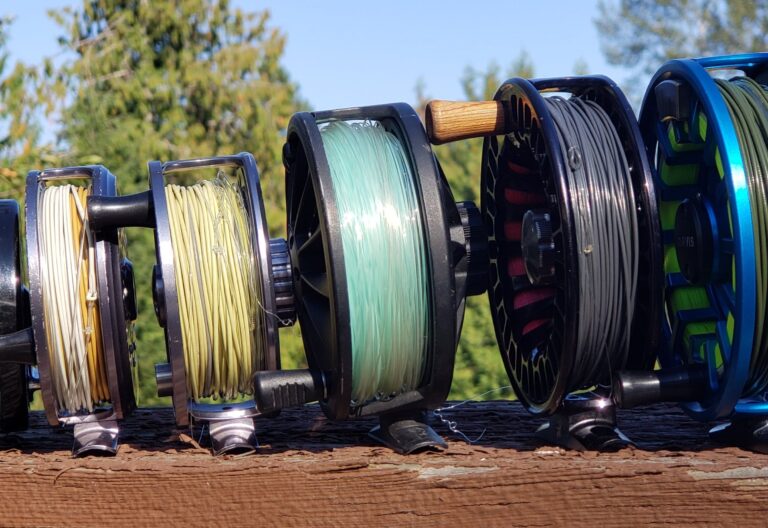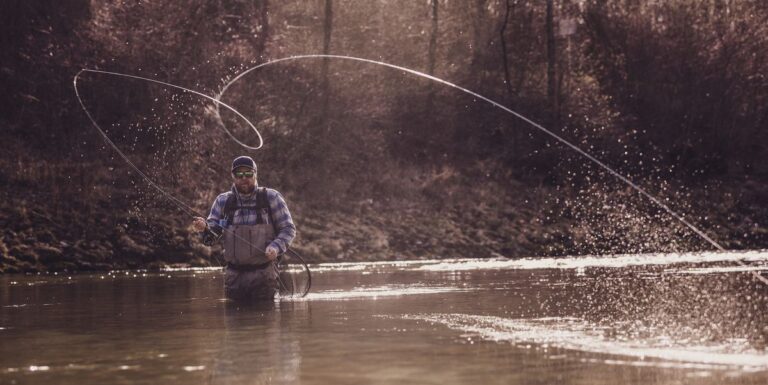A fly fishing rod is specifically designed for angling with artificial flies, while a regular rod is more versatile and can be used for a variety of fishing techniques. Fly fishing rods are typically longer and more flexible, with a lighter weight and specialized features for casting flies.
On the other hand, regular rods are generally shorter and stiffer, designed to handle heavier lures or bait. The main difference lies in their purpose and construction. Now let’s explore the distinctions between fly fishing rods and regular rods in more detail.
Fly fishing is a unique angling method that requires specialized equipment, including a fly fishing rod. Unlike regular rods, fly fishing rods are designed specifically for casting lightweight artificial flies rather than heavier lures or bait. The primary difference between the two lies in the purpose and construction of the rods. Fly fishing rods are longer, lighter, and more flexible, allowing for delicate and accurate fly presentation. They also have specialized features such as a thinner tip and a larger guide size to facilitate smooth casting. Regular rods, on the other hand, are more versatile and can handle a wide range of fishing techniques. They are typically shorter and stiffer, designed to cast heavier lures or bait. Understanding the differences between these types of rods is crucial for choosing the right one for your fishing needs.
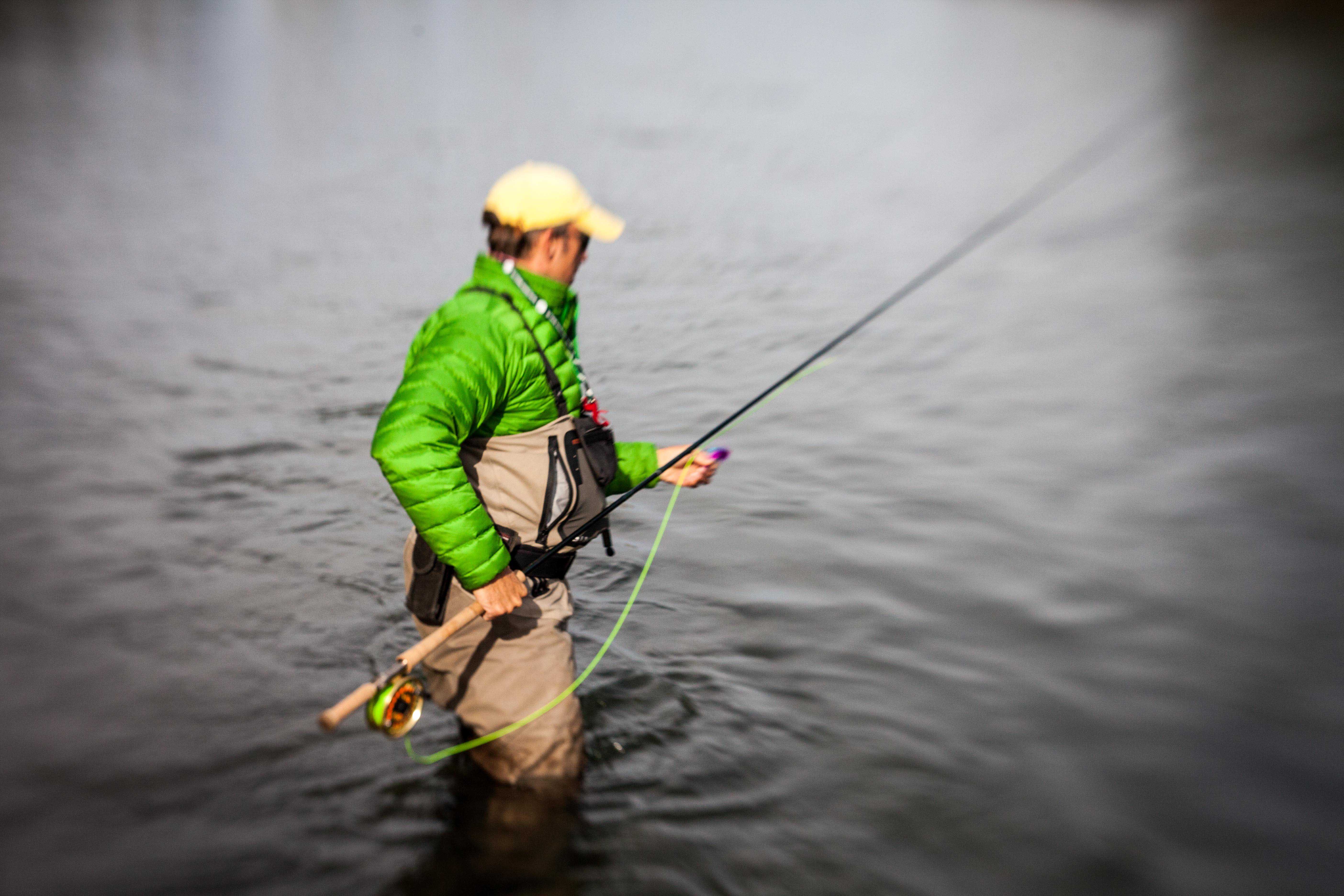
Credit: winstonrods.com
Understanding Fly Fishing Rods
Definition Of Fly Fishing Rods
A fly fishing rod is a specialized fishing rod designed for fly fishing, which is a unique angling method. Unlike regular fishing rods, fly fishing rods are specifically designed to cast a lightweight fly rather than a heavy lure or bait.
They are typically longer and more flexible to allow for precise casting and delicate presentations.
Components Of A Fly Fishing Rod
Fly fishing rods consist of several key components that work together to enhance performance and provide an enjoyable fishing experience. These components include:
- Rod blank: The main body of the rod, usually made of fiberglass, graphite, or a combination of both. It determines the rod’s action and overall feel.
- Grip: The handle or grip section of the rod where the angler holds it. It provides comfort, control, and helps with casting accuracy.
- Reel seat: The part of the rod where the fly reel is attached. It securely holds the reel in place and allows for easy spooling and retrieval.
- Guides: Small circular rings or loops that run along the length of the rod. They guide the fishing line and help reduce friction, allowing for smooth and efficient casting.
- Tip top: The final guide located at the top end of the rod. It helps protect the fragile tip section of the rod and guides the line during casting.
Types Of Fly Fishing Rods
Fly fishing rods come in various types, each designed for specific fishing conditions and techniques. The most common types include:
- Single-handed fly rods: These rods are the most versatile and widely used. They are designed to be cast with one hand and are suitable for a wide range of freshwater and saltwater fishing situations.
- Two-handed fly rods: Also known as spey rods, these longer rods are designed for long-distance casting and fishing in large rivers. They require the use of both hands and are popular for salmon, steelhead, and other species.
- Switch rods: These rods are a hybrid between single-handed and two-handed rods. They offer the flexibility of casting with one or two hands, making them ideal for anglers who fish in a variety of environments.
Benefits Of Using Fly Fishing Rods
Using a fly fishing rod provides numerous advantages over regular fishing rods. Some of the key benefits include:
- Precision casting: Fly fishing rods allow for accurate and precise casting of lightweight flies, giving anglers more control over their presentation and increasing their chances of enticing fish.
- Lightweight design: Fly rods are lighter and more sensitive than regular fishing rods, making them easier to handle for extended periods. This reduces fatigue and allows for longer fishing sessions.
- Delicate presentations: The flexibility of fly fishing rods enables anglers to make delicate presentations, imitating natural insect movements. This can entice even the most selective fish.
- Versatility: With different rod lengths and weights available, fly fishing rods provide versatility for various fishing environments and target species. Anglers can adapt to different conditions and techniques by simply changing their rod setup.
Understanding the components, types, and benefits of fly fishing rods is essential for any angler interested in this unique fishing method. Whether you’re a beginner or an experienced fly fisherman, choosing the right fly fishing rod can greatly enhance your fishing experience and increase your chances of success on the water.
So, grab your fly rod and get ready to embark on the exciting world of fly fishing!
Exploring Regular Fishing Rods
Regular fishing rods are the go-to choice for most anglers when it comes to traditional fishing. Unlike fly fishing rods, regular fishing rods are versatile and can be used in various fishing situations. In this section, we will explore the features, types, and advantages of regular fishing rods.
Definition Of Regular Fishing Rods
Regular fishing rods, also known as spinning rods, casting rods, spincast rods, or surf rods, are designed for conventional fishing methods. These rods use different types of reels, such as spinning reels, casting reels, spincast reels, or conventional reels, depending on the fishing technique employed.
Components Of A Regular Fishing Rod
Regular fishing rods consist of several key components that contribute to their functionality and performance. Let’s take a closer look at each one:
Rod Blank
The rod blank is the main body of the fishing rod, typically made from graphite, fiberglass, or a combination of both materials. It provides the rod’s backbone and determines its flexibility, strength, and sensitivity.
Grip
The grip, or handle, is where anglers hold the fishing rod. It is usually made of cork, foam, or rubber, providing a comfortable and secure grip. The grip also helps absorb vibrations and provides better control during casting and retrieving.
Reel Seat
The reel seat is where the fishing reel is attached to the rod. It ensures proper alignment and secure attachment, preventing any wobbling or movement during fishing.
Guides
Guides are small metal rings that guide the fishing line from the reel to the tip of the rod. These guides are strategically placed to reduce friction and prevent the line from tangling or breaking.
Tip Top
The tip top is the final guide located at the rod’s tip. It helps guide the line smoothly and prevents it from getting caught on the rod’s blank or guides.
Types Of Regular Fishing Rods
Regular fishing rods come in various types, each suited for specific fishing techniques and environments. Here are some common types:
Spinning Rods
Spinning rods are popular among anglers due to their versatility and ease of use. They work well with spinning reels, allowing for long and accurate casts. Spinning rods are suitable for a wide range of fishing styles, from freshwater to saltwater fishing.
Casting Rods
Casting rods, also known as baitcasting rods, are designed for precision and accuracy. Anglers use these rods with baitcasting reels, allowing for better control and accuracy when casting heavier lures or tackling larger fish species.
Spincast Rods
Spincast rods are ideal for beginners or anglers who prefer a simpler fishing setup. These rods come with a closed-face spincast reel, which makes them easy to use and reduces the chances of line tangling.
Surf Rods
Surf rods are specifically designed for surf fishing, where anglers cast their lines from the shoreline or into the surf. These longer and sturdier rods provide the strength and distance needed to reach fish in deeper waters.
Advantages Of Using Regular Fishing Rods
Regular fishing rods offer several advantages that make them popular among anglers of all skill levels. Let’s explore some of these advantages:
Power And Distance
Regular fishing rods, especially casting rods and surf rods, provide the power and distance needed to cast heavier lures or reach fish in far-off areas. Anglers can target larger fish species and cover more water, increasing their chances of success.
Ease Of Use
Regular fishing rods are generally easier to use and require less technique compared to fly fishing rods. With spinning, casting, or spincast rods, anglers can quickly learn and master the basic casting techniques, making them a more accessible option for beginners.
Ability To Handle Heavy Lures
Regular fishing rods excel in handling heavier lures, such as crankbaits, spinnerbaits, or jerkbaits. The sturdy construction and stronger backbone of these rods allow anglers to cast and retrieve these lures effectively, enticing fish to strike.
Durability
Regular fishing rods are built to withstand the rigors of fishing, ensuring long-lasting performance. The materials used, such as graphite or fiberglass, offer durability and resilience to handle the stress and pressure of fighting fish.
Regular fishing rods are a reliable and versatile choice for anglers, offering a wide range of options to suit different fishing techniques and environments. From the power and distance they provide to their ease of use and durability, regular fishing rods are a go-to gear for many fishing enthusiasts.
Key Differences Between Fly Fishing Rods And Regular Fishing Rods
Fishing techniques:
- Fly casting vs. Regular casting:
- Fly casting uses a unique technique where the angler imitates the movement of a fly on the water’s surface.
- Regular casting involves the use of heavier bait or lures and a different casting style.
Presentation of the bait:
- Fly line vs. Fishing line:
- Fly fishing relies on a fly line that is specially designed to be lightweight and easily cast.
- Regular fishing uses a heavier fishing line that is ideal for casting heavier bait or lures.
Rod design and composition:
- Length and flexibility:
- Fly fishing rods are typically longer and more flexible to enable precise casting and delicate presentations.
- Regular fishing rods vary in length and flexibility depending on the fishing technique and target species.
- Power and action:
- Fly fishing rods have a softer power and slower action, which allows for better control and delicate presentation of the fly.
- Regular fishing rods have a stiffer power and faster action to handle heavier bait or lures and to set the hook more effectively.
- Weight and balance:
- Fly fishing rods are designed to be lightweight for effortless casting and reduced fatigue during long fishing sessions.
- Regular fishing rods can be heavier, depending on the target species and fishing conditions.
Appropriate fishing scenarios:
- Freshwater vs. saltwater fishing:
- Fly fishing rods are commonly used in freshwater environments such as rivers, streams, and lakes.
- Regular fishing rods are suitable for both freshwater and saltwater fishing, depending on their design and materials.
- Targeted fish species:
- Fly fishing rods are often used to target trout, salmon, and other freshwater species that feed on insects.
- Regular fishing rods are versatile and can be used to target various fish species, including freshwater and saltwater game fish.
- Fishing environments:
- Fly fishing rods perform best in open areas with ample room for casting, such as rivers and lakes.
- Regular fishing rods are suitable for various fishing environments, including tight spaces, offshore, and nearshore fishing.
Selection criteria:
- Skill level:
- Fly fishing requires a certain level of skill and practice to master the casting technique and presentation.
- Regular fishing can be suitable for beginners and experienced anglers alike, depending on the chosen fishing technique.
- Fishing goals:
- Fly fishing is often associated with the pursuit of a more challenging and immersive fishing experience, focusing on a closer connection with nature and the art of fly casting.
- Regular fishing allows for a wider range of fishing techniques and goals, including recreational fishing, sport fishing, and commercial fishing.
- Personal preference:
- Choosing between fly fishing rods and regular fishing rods ultimately depends on personal preference, fishing style, and individual fishing goals.
Choosing the right rod for your needs:
- When it comes to selecting the appropriate fishing rod, it is essential to consider the fishing techniques, presentation of bait, rod design and composition, appropriate fishing scenarios, and personal preference. Understanding the key differences between fly fishing rods and regular fishing rods can help you make an informed decision. Whether you opt for the finesse and delicate presentations of fly fishing or the versatility and power of regular fishing, choose a rod that suits your skill level, fishing goals, and enjoyment of the sport.
Conclusion
Understanding the difference between fly fishing rods and regular rods is crucial for all fishing enthusiasts. While both types of rods serve a similar purpose, they cater to different fishing techniques and situations. Fly fishing rods are specifically designed for fly casting and offer a delicate presentation of flies to fool fish.
On the other hand, regular rods are more versatile and can handle a variety of fishing styles and bait options. When choosing between the two, it is important to consider the fishing environment, target species, and personal preferences. Fly fishing rods excel in freshwater streams and rivers, particularly when targeting trout and salmon, while regular rods are better suited for various types of fishing including freshwater, saltwater, and big game fishing.
By understanding the unique qualities of each rod type, anglers can enhance their fishing experience and improve their chances of success. So whether you prefer the elegance of fly fishing or the versatility of regular rods, remember that choosing the right fishing rod is essential for an enjoyable and productive day on the water.

